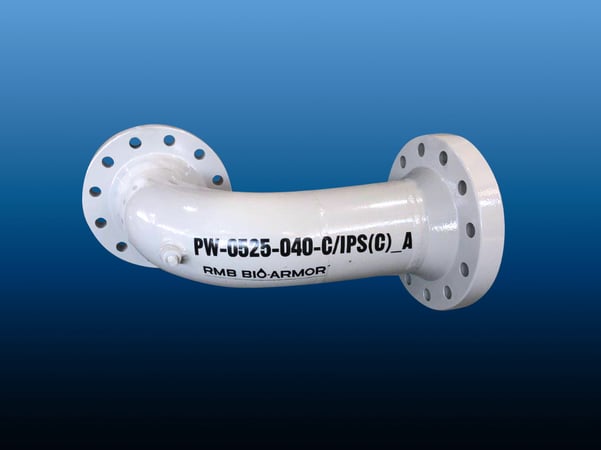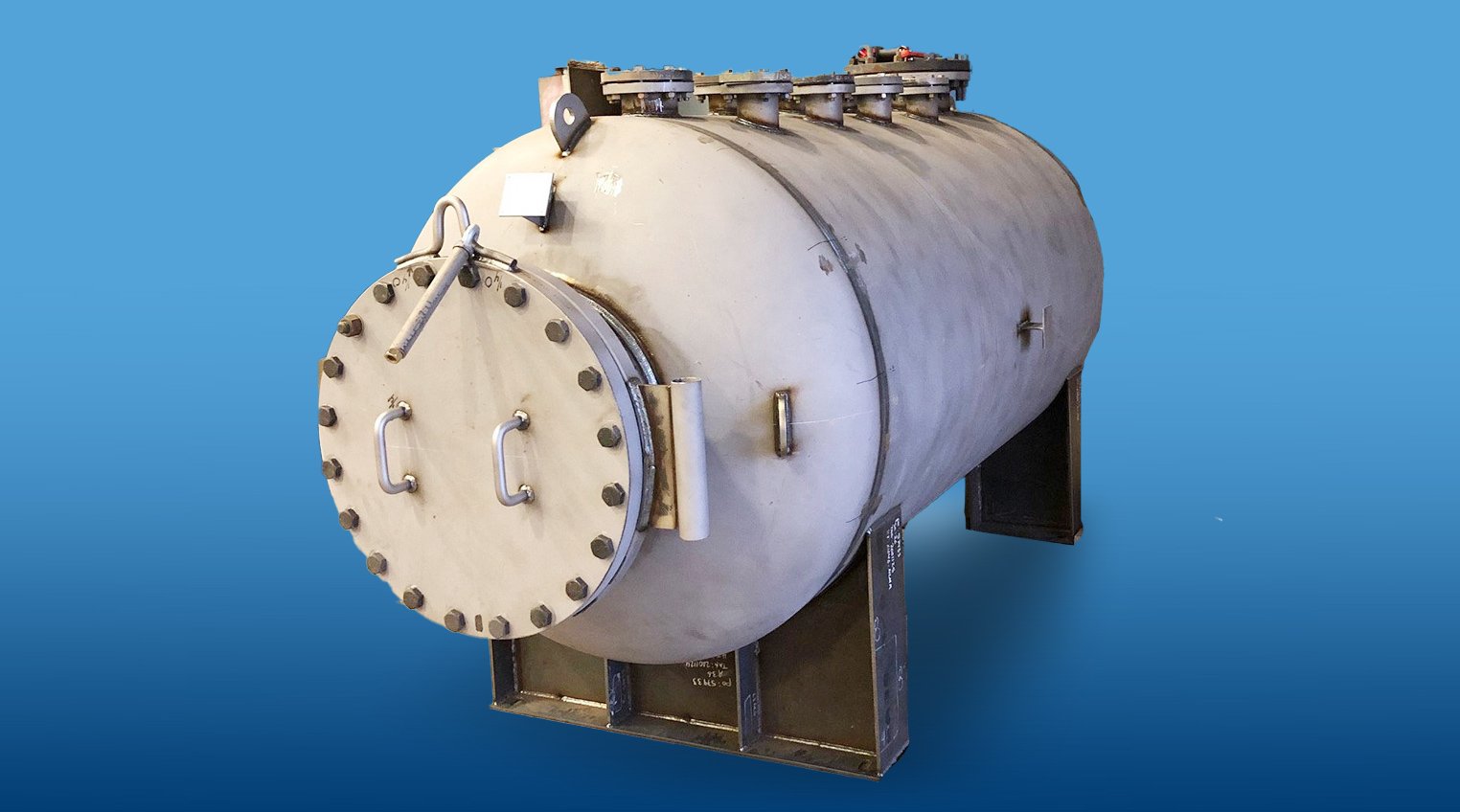How to Prevent Microbiologically Influenced Corrosion in the Oil and Gas Industry
Engineers in the oil and gas industry know that small things can add up to big problems. A good case in point is the corrosion of pipes and process vessels caused by tiny bacteria. Layers of bacteria accumulate and enable a chemical reaction that corrodes the metal. According to some estimates, as much as 30-40% of corrosion-induced failures in oil and gas production are caused by microbiologically influenced corrosion (MIC), or biofouling.
Biofilm is difficult to remove by flushing, and treatment with biocides is often impractical or ineffective, so pigging is the usual method for mitigation. This is a costly maintenance procedure.
On top of maintenance costs, the cost of shutdown and replacement is significant. The global cost of corrosion equals a jaw-dropping estimated $2.51 trillion. In the United States, MIC is estimated to account for 25% of total corrosion costs.

What is biofouling (MIC)?
Biofouling is the accumulation of microorganisms, plants, algae, or other biological materials on surfaces immersed in water or other liquid environments. It can cause problems in various industries with equipment immersed in water. One such piece of equipment would be pipes and piping systems, particularly those associated with oil and gas extraction.
Otherwise known as MIC, these sulfate-reducing and iron-oxidizing bacteria form synergistic communities, accumulating on the internal surfaces of these process pipes and vessels.
These bacterial communities generate hydrogen sulfide, which is cathodic to the metal and causes pit formation and stress cracking. Surprisingly, very few coating systems on the market provide protection from this type of corrosive attack.
Some of the industries that can experience biofouling, or MIC, within piping can include:
- Aquaculture farms (e.g., shellfish cultivation)
- Chemical processing plants
- Desalination plants that produce fresh water from seawater or brackish water can experience biofouling in the intake and distribution systems
- Food and beverage processing, especially breweries, wineries, and dairies
- Marine and shipping on ships, boats, and offshore structures
- Mining industry
- Oil and gas affecting offshore oil and gas platforms and even onshore facilities that use seawater for various purposes
- Pharmaceutical and biotechnology, particularly facilities that handle biological materials.
- Power generation power plants that use water for cooling
- Pulp and paper plants
- Recreational facilities (e.g., plumbing and circulation systems at water parks or in fountains)
- Water treatment plants
What causes biofouling?
Biofouling begins with biofilm formation. Biofilms are communities of microorganisms that adhere to surfaces and embed in a self-produced matrix. Biofouling typically begins with the formation of a biofilm on the submerged surface.
Once the initial layer of biofilm is established, this provides a suitable environment for the attachment and settlement of other microorganisms and fouling organisms, leading to the growth of ever increasingly complex and dynamic fouling communities.
This biofilm provides a continuous source of nutrients for the fouling organisms. It also aids with the adhesion of organisms to the surface, such as barnacles and algae, and promotes colonization and growth.
Biofouling has detrimental effects on many industrial structures and related equipment. It can increase the drag on ships, reduce heat transfer efficiency in power plants, and corrode surfaces. Initial measures or equipment treatment is a first step for MIC prevention, or to prevent biofouling. Regular maintenance, such as checking for evidence of corrosion within pipes, supplies an effective means to determine corrective measures against biofilm formation.
RMB BIO-ARMOR™ Solution
Pipes and vessels lined with high-density polyethylene (HDPE) have been proven to last more than 20 years in salt water and brine service by providing long-term protection against aqueous corrosion. Polymer coatings, however, can be degraded by localized microbiological attacks.
The experts at RMB Products felt there must be a better way. Working with biocide supplier Advanced Nano Solutions, RMB engineers added Advanced Nano’s antimicrobial powder to RMB’s HDPE resin to develop an HDPE lining that contains biocide. The result was RMB BIO-ARMOR, a proprietary blend of HDPE resin and antimicrobial powder that is applied to vessels by a rotational lining process. BIO-ARMOR protects against aqueous corrosion as well as 99% of the microbes that cause MIC and lead to biofouling for an effective biofouling prevention aid.
Through our experience with customers, we have observed multiple benefits of BIO-ARMOR. Foremost, customers have been able to lower their operational costs because pipelines and vessels require less maintenance. Additional cost savings come from increasing the service life of equipment. A vessel lined with BIO-ARMOR should last 5-10 years longer than a pipelined with standard HDPE. Finally, customers have been able to lower their impact on the environment, as no biocide pipeline flushing is needed.
BIO-ARMOR is applied in the same way as standard HDPE, providing MIC protection without adding more processing costs. We can line vessels of complex geometries and large sizes, including pipes and vessels up to 9 feet NPS and straight section spools up to 20 feet long. We accommodate flange ratings of ANSI 150, 300, 600, 900, 1500, and 2500. Because it is a standard process, lead times are short. Recently, we lined 81 pieces for an energy customer in only two and a half weeks.
Corrosion Tested in the Ocean
The Sacred Heart Marine Research Centre is a research center operating in collaboration with Poseidon Ocean Sciences. Located in the warm ocean waters off the coast of India, it offered a harsh environment for testing the performance of BIO-ARMOR. According to experts at the center, an immersed, unprotected surface will be covered by juvenile barnacles within two weeks. Even a low-copper coating will foul within a month, hosting barnacles, algae, and sponges.
A test was done with metal pieces rotationally lined with BIO-ARMOR. The pieces were immersed in depths of more than two feet below the ocean’s surface. To understand how much biocide was needed in the blend, the HDPE linings had different levels of antimicrobial powder.
The testing proved BIO-ARMOR is highly effective at resisting MIC and preventing biofouling. All samples showed strong protection after 90 days. The lining showing the best results had the most biocide (12%) in the HDPE formula.
Prevent Equipment from MIC and Premature Failure
In testing and in customer experience, the addition of a biocide to HDPE has no adverse effect on the mechanical properties of the rotational lining. A lining of BIO-ARMOR neutralizes 99% of harmful, corrosion-inducing bacteria, providing a long-term, cost-effective solution that supplies MIC prevention for the oil and gas industry. Companies are increasingly adopting this new technology, which has the potential to dramatically slash costs for the industry.
For more information, contact RMB or download the BIO-ARMOR white paper.





